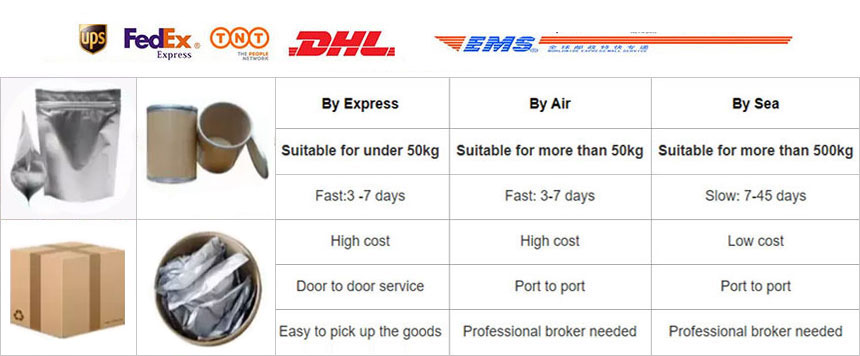Phone: 86-29-89601602
Mail: sales27@interlgroup.com
Add: Room 305 , 3/F , Haipai Decoration Office Building , Yudu Avenue , Yuncheng , Shanxi
Factory Supply 1,3-Butadiene Liquid CAS 106-99-0 Raw Materials
Product Overview:
1,3-Butadiene Liquid is an important petrochemical raw material, which has a wide range of applications in the fields of synthetic rubber and synthetic resins, etc. In the synthetic rubber industry, the consumption of butadiene in 1,3-Butadiene Liquid accounts for 80% of the global total consumption of butadiene. Nowadays, there are two main production methods for butadiene: (1) butane-butene dehydrogenation; (2) ethylene by-product extraction. However, these two methods rely heavily on the utilization of petroleum resources. In the 1940s and 1950s, the route of butadiene production from ethanol occupied a very important position, mainly because in the early stage of oil exploitation, nowadays the two methods do not have any economic advantages. With the increasing environmental pollution and energy crisis, countries are again working on the catalytic study of butadiene production from bioethanol as feedstock.
1,3-Butadiene CAS 106-99-0 Colorless gas with special odor. Slightly soluble in water, soluble in ethanol, methanol, soluble in acetone, ether, chloroform, etc.. It is the raw material for manufacturing synthetic rubber, synthetic resin, nylon and so on. Preparation method mainly has butane and butene dehydrogenation, or by carbon tetra fraction separation and obtained. It is anesthetic, especially irritating mucous membrane, easy to liquefy. Critical temperature 161.8, critical pressure 4.26 MPa.1,3-Butadiene CAS 106-99-0 Forms explosive mixtures with air, explosion limit 2.16~11.47%(v/v).
Factory Supply 1,3-Butadiene Liquid CAS 106-99-0 Raw Materials Attributes
MF:C4H6
MW: 54.09
EINECS:203-450-8
Specification:1,3-Butadiene Liquid
Sample:1,3-Butadiene Liquid
Brand: 1,3-Butadiene Liquid
Appearance: White Liquid
Storage: Cool Dry Place
Brand: Globalchemical
Shelf Life: 2 Years
Test Method: HPLC
Factory Supply 1,3-Butadiene Liquid CAS 106-99-0 Raw Materials Details
Uses and synthesis of 1,3-Butadiene Liquid
1,3-Butadiene CAS 106-99-0 is an important petrochemical raw material with a wide range of applications in synthetic rubber and synthetic resins. In the synthetic rubber industry, butadiene accounts for 80% of the global consumption of butadiene.

There are two main production methods for 1,3-Butadiene Raw Materials:
- (1) butane-butene dehydrogenation
- (2) ethylene by-product extraction. However, these two methods rely heavily on the utilization of petroleum resources. In the 1940s and 1950s, the route of butadiene production from ethanol occupied a very important position, mainly because in the early stage of oil exploitation, nowadays there is no economic advantage of the two methods. With the increasing environmental pollution and energy crisis, countries are again working on the catalytic study of butadiene production from bioethanol as feedstock.
1,3-Butadiene Raw Materials Colorless gas with special odor. Slightly soluble in water, soluble in ethanol, methanol, soluble in acetone, ether, chloroform, etc.. It is the raw material for synthetic rubber, synthetic resin, nylon and so on. Preparation method mainly has butane and butene dehydrogenation, or by carbon tetra fraction separation and obtained. It is anesthetic, especially irritating mucous membrane, easy to liquefy. Critical temperature 161.8, critical pressure 4.26 MPa. Forms explosive mixtures with air, explosion limit 2.16~11.47% (v/v).
1,3-Butadiene Raw Materials is an important basic organic raw material for petrochemical industry, with a wide range of industrial uses. Because it is a conjugated diolefin, 1,3-Butadiene Liquid can be substituted, addition, cyclization, polymerization and copolymerization with a variety of compounds, and can be used to synthesize a variety of organic chemical products. Synthetic rubber industry is the most important field of butadiene, 1,3-Butadiene Liquid consumption accounted for 80% of the total global consumption of butadiene, 1,3-Butadiene Liquid is mainly used in the synthesis of styrene butadiene rubber, butyl rubber, chloroprene rubber, nitrile rubber and polybutadiene rubber. Butadiene is also widely used in synthetic resins, such as ABS resin, K resin, MRS resin and thermoplastic elastomer SBS.

Applications / Functions of 1,3-Butadiene Liquid
1,3-Butadiene Liquid is used as a raw material for synthetic rubber, synthetic resin, synthetic fiber, plasticizer and emulsion paint.
1,3-Butadiene Raw Materials are the main raw materials for the production of synthetic rubbers (styrene butadiene rubber, male-butadiene rubber, nitrile butadiene rubber, and chloroprene rubber). With the development of styrene plastics, styrene is copolymerized with butadiene to produce a variety of resins for a wide range of applications (e.g., ABS resins, SBS resins, BS resins, and MBS resins), and butadiene is gradually taking an important role in the production of resins. 1,3-Butadiene Raw Materials are also used in the production of ethylidene hypoglycolide (the third monomer of ethylene-propylene rubber), 1,4-butylene glycol (engineering plastics), and 1,4-butylene glycol (engineering plastics), as well as in the production of synthetic rubber. Butylene Glycol (engineering plastics), adiponitrile (nylon 66 monomer), cyclobutanesulfone, anthraquinone, tetrahydrofuran and so on. 1,3-Butadiene Raw Materials are also used in the production of fine chemicals. Butadiene is used as a raw material for the production of fine chemicals. There are mainly the following aspects.

- (1) 1,3-Butadiene Raw Materials undergoes the Diels-Alder reaction with electron-deficient bis-alkenophilic compounds to produce anthraquinone, the derivatives of which are important dye intermediates, bactericides and insecticides.
- (2) 1,3-Butadiene Liquid reacts with maleic anhydride (maleic anhydride for short) and then condenses to produce tetrahydrophthalic anhydride, which can be used as a curing agent and plasticizer for polyester esters and epoxy resins. Tetrahydrophthalic anhydride can be oxidized by nitric acid to obtain butane tetracarboxylic acid, which is the raw material for manufacturing water-soluble paint. The same tetrahydrophthalic anhydride hydrogenated to produce hexahydrophthalic anhydride, can be used as a curing agent for epoxy resin.
- (3) 1,3-Butadiene Liquid and sulfur dioxide action, the generation of cyclobutyl sulfone, and then formulated into an aqueous solution in the presence of nickel skeleton catalyst hydrogenation to produce cyclobutyl sulfone, is a selective solvent for the extraction of aromatic hydrocarbons. It is a selective solvent for aromatic extraction. A mixture of cyclobutanesulfone and diisopropanolamine can be used to remove carbon dioxide gas.
- (4) Linear dimerization of 1,3-Butadiene CAS 106-99-0 is useful in industry. Line dimerization after the eight-carbon straight-chain olefins, and then aldolization, hydrogenation that is nonanol, in the synthesis of spices, surfactants, lubricant additives have important uses. With cobalt complex as catalyst, its dimerization, trimerization, tetramerization, are the raw materials for the synthesis of advanced alcohols and macrocyclic musk.Soluble in alcohols and ethers, also soluble in acetone, benzene, dichloroethane, amyl acetate and furfural, copper acetate ammonia solution. Insoluble in water.
1,3-Butadiene Liquid properties and stability
1,3-Butadiene CAS 106-99-0 Colorless gas with weak aromatic odor, easily liquefied. Soluble in alcohols and ethers, also soluble in acetone, benzene, dichloroethane, amyl acetate and furfural, copper ammonia acetate solution. Insoluble in water.
1,3-Butadiene CAS 106-99-0 has a double bond that is somewhat longer than the usual C=C double bond, a single bond that is somewhat shorter than the usual C-C single bond, and a C-H bond that is shorter than in butane. This is the result of the bond averaging that occurs in the 1,3-Butadiene CAS 106-99-0 molecule. This interaction between atoms, which exists and is exhibited in conjugated systems, is called the conjugation effect. We also call the conjugation effect of 1,3-Butadiene CAS 106-99-0 a pie-pie conjugation since there are sigma sigma sigma and pie pi bonds between C and C, and it is the pie bond that acts as the conjugation effect. As a result of the conjugation effect, the pie-bonding electron becomes an off-domain electron that moves in molecular orbitals and is no longer confined between two carbon atoms.
The averaging caused by the conjugation effect is a property within the molecule.1,3-Butadiene Liquid molecule has a completely symmetrical distribution of its electron cloud when the molecule is not subjected to external influences. However, when an addition reaction with a reagent such as BR occurs, the polarization of the molecule is induced by the influence of BR ions. As a result, the C1 atom's electron cloud density increases, slightly partially negatively charged, while C2's electron density correspondingly decreases, slightly partially positively charged, and because C2 is slightly partially positively charged to attract electrons, from the two again affects the piper electron cloud of C3 and C4, so that C3 is slightly partially negatively charged, and C4 is slightly partially positively charged.
It can be seen that more conjugated diolefins are more likely to undergo 1,2 or 1,4 addition. Polar solvents are not favorable for 1,4 addition. In non-polar solvents, increasing the temperature is more favorable to the increase of 1,2 structure content, while in the polymerization of hydrocarbon solvents with the participation of polar additives, increasing the temperature is more favorable to the increase of 1,4 structure content. Of course, the specific mode of addition is also influenced by the structure of the reactant j.
Production method of 1,3-Butadiene Liquid
The industrial production of 1,3-Butadiene Liquid can be synthesized from carbaryl and acetaldehyde, catalytic dehydrogenation of butene, one-step dehydrogenation of n-butane, and extraction of C4 from the by-production of ethylene, etc. The production of 1,3-Butadiene CAS 106-99-0 is the most economical with the extraction of by-production of ethylene, and the proportion of the production of butadiene from this method is getting bigger and bigger in different countries and regions. The proportion of butadiene production from dehydrogenation of butane and butene is decreasing, and the ethanol production of butadiene is gradually shut down.
- Ethanol Process Butadiene is produced from ethanol by catalytic dehydrogenation and dehydration of ethanol as raw material, magnesium oxide and silica as main catalysts and active additives at 360 - 370°C. The process is carried out in a catalytic mode.
- Extraction Ethylene cracking device by-product of C4 fraction, solvent extraction method to extract butadiene, according to the different solvents used, can be divided into acetonitrile extraction and N,N-=methyl formamide extraction method.Acetonitrile extraction method Acetonitrile is used as the extractant. The C4 fraction by-produced from ethylene cracking device is sent to butadiene extraction distillation tower, acetonitrile is added at the top, butene and a small amount of butane are discharged from the top of the tower; butadiene, alkynes and acetonitrile enter into the first desorption tower, acetonitrile is desorbed out, and return to the extraction distillation tower. Butadiene and alkynes enter the second extraction tower, acetonitrile is added at the top of the tower, butadiene comes out from the top of the tower and enters into the water washing tower, and then polymerization grade butadiene is obtained by distillation and dehydration.N,N-=methylformamide extraction method N,N-dimethylformamide as the extractant. q fraction of the second extraction, the second distillation, the production of qualified butadiene products. The first extraction removes impurities less soluble than butadiene in N,N-dimethylformamide, such as butene and butane; the second extraction removes impurities more soluble than butadiene in N,N-methylformamide, such as vinyl acetylene. The first distillation removes components lighter than butadiene, such as methyl acetylene; the second distillation removes components heavier than butadiene, such as cis-2-butene, 1,2-butadiene, c5 fractions and high-boiling points, and finally obtains more than 99. 5% of 1,3-butadiene finished products.










